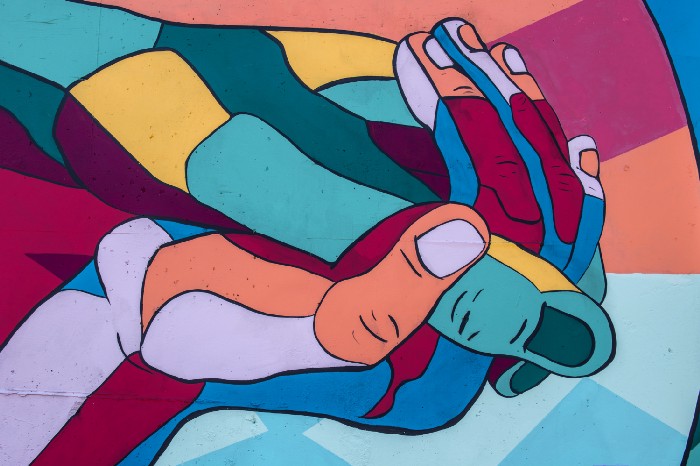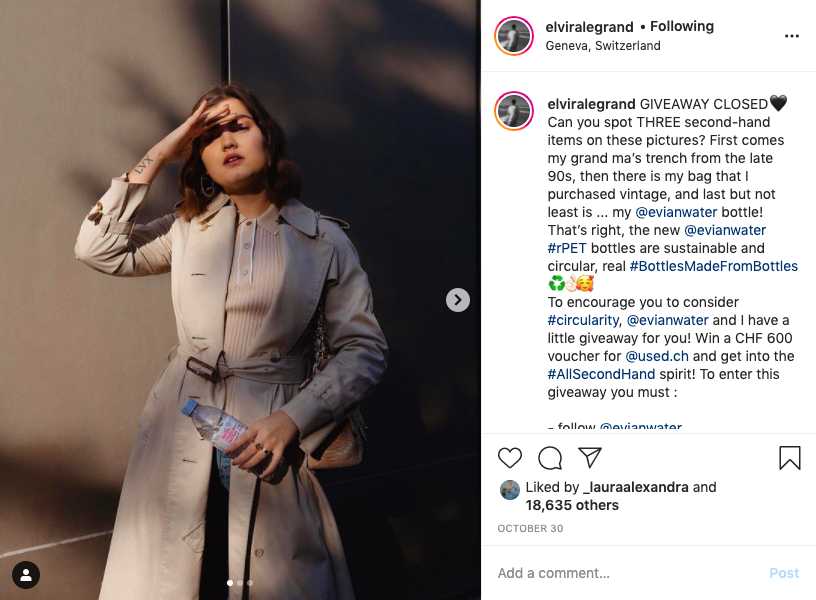We’ve known that “Content is King” for over a decade, but content must be creative and authentic to effectively captivate and engage audiences. By taking a creative, authentic approach, brands have the opportunity to connect with their audience and drive measurable results.
Authenticity is Vital and Consumers Notice It
Consumers want to support brands that embody their own values. They expect brands to be authentic in their operations as well as marketing. As written in Inc., Gen-Zers, “want to see authenticity in marketing, including proof and a culture to back up claims of strong company values.” 67 percent agreed that ‘being true to their values and beliefs makes a person cool,’ and they feel the same about brands.
Additionally, brands must not only show authenticity but also operate in accordance with the values they espouse. “If a brand advertises diversity but lacks diversity within its own ranks, for example, that contradiction will be noticed.”, explains McKinsey and Company.

Connecting with authentic influencers is one effective way to engage audiences. Influencers can also help your brand to be more creative, bringing fresh ideas no one else inside your organization may have thought of before. According to the Swiss Influencer Marketing Report 2020, about half of the marketing managers surveyed estimate the return on investment of their influencer campaigns to date to be higher than with alternative forms of advertising.
Experiment and Determine What’s Most Effective
Experimenting is vital in the quest for authenticity. Marketers cannot just assume they know what people want to hear — they must get the facts. Test ideas and gather input from a representative sample of your audiences. As you test, vary not only the content of your message, but a wide variety of attributes, such as:
- Channels: Email, social media platforms, Point of Purchase (POP) displays
- Themes: Current events, holidays, leisure activities
- Topics: Individuality, environmental sustainability, social justice
- Media: Text, videos, images
- Social media formats: lives, stories, IG TV, Tiktok and reels videos, interactive polls, forums
Step outside the box.
The accessibility of measurable results enables marketers to shift gears quickly and further boost the most successful campaigns. Additionally, working with creative experts such as Kingfluencers can infuse additional creativity into your experimentation repertoire and boost your outcomes.
Highlight Sustainability
According to a Facebook-commissioned study of 11,300 people across 11 countries, 68% of Gen Z expect brands to contribute to society. Influencer marketing can be an effective medium for brands to highlight their positive efforts, such as environmental sustainability. Kingfluencers ran a campaign with Evian highlighting the brand’s sustainability efforts with the hashtag, #bottlesmadefrombottles. Posts from influencers including Elvira Legrand achieved engagement rates as high as 4.15%.
Patagonia, an American manufacturer of outdoor clothing, pays a “self-imposed Earth tax,” 1% of sales, to support environmental nonprofits working to defend our air, land, and water around the globe. The company also leverages user generated content to build strong connections with consumers. As one Patagonia fan writes on Medium, “I love when brands use photos from their fans or ambassadors. I think it does a really good job of creating a relationship between the brand and the consumer, and makes them feel like they are appreciated by the brand… By posting the photos and giving credit to the photographer they [Patagonia] are not only getting breathtaking photographs, but also making their customers feel like part of the family.”
Make Campaigns Interactive and Collaborative
Brands that are more creative achieve better results, specifically:
- Increased engagement
- More conversions
- Better customer loyalty
Social media, in particular, provides brands with the unique opportunity to make campaigns interactive and collaborative. By incorporating user-generated content and encouraging participation and interaction, campaigns become conversations rather than brand monologues.
For example, CoverGirl partnered with eight TikTok influencers to boost product awareness among Gen Z. The campaign encouraged audience interaction with the content by incorporating lip-syncing, one of the central engagement drivers on TikTok. The #CleanFreshHype branded campaign generated over 6.5B impressions and a 5.7% engagement rate.
User Generated Content and Other Sources
While influencers are an effective vehicle for connecting to your audience, they can also contribute their subject matter expertise and collaborate with you to develop creative campaign ideas. Creative ideation can be done either independently by an influencer or together with brands.
Additionally, social influence marketing includes more than professional influencers and content creators.
A wide range of individuals can contribute to your marketing efforts, such as employees, CEOs and other leaders, and consumers.

User Generated Content (UGC) from brand fans and advocates can be very valuable and boost community engagement.
Most influencers have a high degree of specialized expertise. Their dedicated focus helps them earn big followings. As subject matter experts, they’re uniquely qualified to bring fresh, creative ideas to your brand’s marketing.
Creativity thrives on many platforms such as TikTok, helping the most creative users rise to the top. By tapping into their creative energy, you can collaborate to generate content that hits the right notes and truly engages.
Influencers Can Generate Content, Connect with Your Audience, + Both
And, of course, influencers can serve as channels to connect with your audience, sources of content creation, or both. For International Women’s Day, Microsoft leveraged one group of renowned adventure photographers for content creation and another group of established social media accounts to distribute and promote the images. The campaign, which aimed to encourage young girls to work in STEM (Science, Technology, Engineering, Math), featured photographs accompanied by authentic stories. The posts were sponsored on five of National Geographic’s Instagram channels, reaching 91 million total followers.
Kingfluencer’s own Chief Influence Officer Anja Lapčević, commented on the role of influencer marketing in making connections and forming relationships.
The nice thing about our work is that we always create relationships. The same principle applies here as in a love story: if the chemistry and values are right, the result is love. Love from the influencer for the brand and back results in the love message to the consumer. We want to work with this principle, and I look forward to many more love stories at Kingfluencers. But as it is in love, the way there is not always easy. Not every relationship has a happy ending and therefore we are constantly working on it. Because we believe that in the end every pot will find its lid.
Author: Yoeri Callebaut, Chief Growth and Marketing Officer at Kingfluencers


